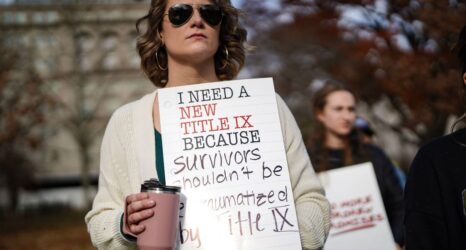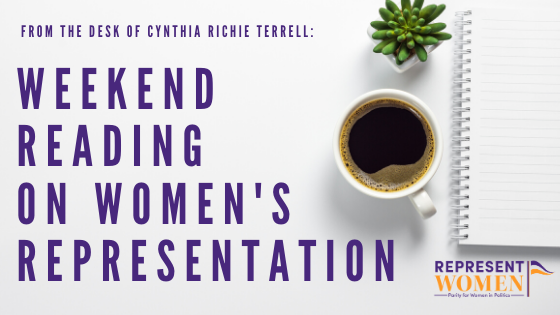
Weekend Reading on Women’s Representation is a compilation of stories about women’s representation in politics, on boards, in sports and entertainment, in judicial offices and in the private sector in the U.S. and around the world—with a little gardening and goodwill mixed in for refreshment!
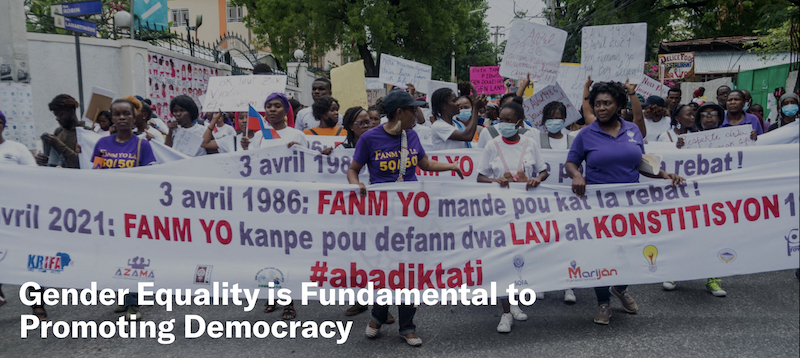
As I read through the great news clips that I get every weekday from the Ascend Fund, FairVote and RepresentWomen, I am encouraged to see more articles that make the connection between women’s representation and healthy democracy.
While authoritarian governments by definition have more power to ensure gender balanced outcomes, full-fledged democracies—where voters have real choice and power and more representative outcomes emerge naturally—are the gold standard.
Susan Markham and Stephenie Foster write about the role of gender equality in the promotion of democracy in this piece in Just Security:
The United Nations Commission on the Status of Women (CSW) meeting that concluded in late March was focused on the theme of “Women’s full and effective participation and decision-making in public life.” Importantly, at CSW, Vice President Kamala Harris emphasized the key connection between women’s leadership and strong democratic government: “The status of women is the status of democracy. The status of democracy also depends fundamentally on the empowerment of women, not only because the exclusion of women in decision-making is a marker of a flawed democracy, but because the participation of women strengthens democracy.”
Indeed, gender equality strengthens democracy. Research and on-the-ground experience shows that democratic institutions such as government ministries, elected decision-making bodies, political parties, and civil society organizations are stronger with gender equality. All must include women’s voices. But the world has a long way to go on this front. In national legislative bodies, 22 percent of parliamentarians, and 20 percent of parliamentary speakers, are women. Furthermore, women hold only 10 percent of political party leadership positions.
As Harris noted, women’s political participation results in tangible gains for democracy. This includes greater responsiveness to citizen needs and increased cooperation across party and ethnic lines. Women’s meaningful participation in politics affects the range of issues considered and the types of solutions proposed. Countries with high marks on civil rights and political liberties have higher proportions of women in national legislatures than countries with low marks. Higher numbers of women political leaders also correspond with higher standards of living, better outcomes in access to education, infrastructure and health, and more responsive government.
In addition to bringing their lived experiences to policymaking, women tend to work in less hierarchical, more participatory and more collaborative ways. Globally, women lawmakers are perceived as more honest and responsive than male counterparts, qualities that encourage confidence in institutions.
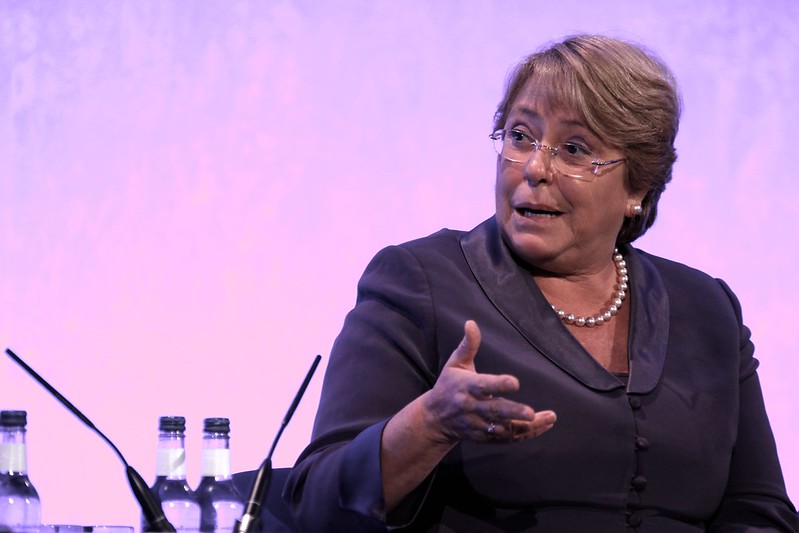
In the past decades women have risen to positions of executive leadership in Latin America—at a higher rate than in North America—due in part to the use of gender quotas and proportional voting systems. But there are currently no women heads of state in South America according to this interesting piece by Vanessa Rubio in the Americas Quarterly:
As Latin America wrestles with the pandemic and its worst economic crisis in more than a century, political leadership rests in the hands of male leaders in every single one of its 20 countries. Just as troubling, Latin America has not elected a single woman president in the last seven years.
Amid reports of glaring COVID-19 mismanagement ranging from Mexico all the way down to Brazil, one cannot help but recall Cindy Gallop and Tomás Chamorro-Premuzic’s famous insight: “The real problem is not a lack of competent females, but rather too few obstacles for incompetent males.”
It was not always so. As recently as 2014, the region had four female presidents at the same time. But today, beyond the damage from the pandemic, the lack of female leadership at the highest levels of government cannot be overlooked. It is both a measure of structural exclusion and a flaw in one of democracy’s central pillars: representation. It is no coincidence that, according to the latest Latinobarómetro survey, dissatisfaction with the quality of democracy in Latin America now sits at its highest level since the mid-1990s, and that Latin Americans find themselves once again entertaining the merits of authoritarian models.
It seems reasonable to wonder if, had women been in charge in Latin American countries during this pandemic, they might have followed a path closer to Angela Merkel’s, embracing science while working to build consensus around social distancing and other prudent measures. Perhaps they would have displayed more empathy toward vulnerable groups including women, whom studies show have been forced out of the workforce in higher numbers than men. What is clear is that, when women are left out of political leadership, our governments cannot fully achieve economic, political and social progress.
So: How did we get here? Throughout modern history, Latin America has had 11 female presidents. That is of course 11 more than the United States. But half of them rose to power under extraordinary circumstances and constitutional ruptures. It is instructive to consider their stories, what they have in common, and what they tell us about today’s unfortunate lack of representation….A lack of representation
After considering these cases, the number “11” must be seen in a different light. Given how many ascended to the job through circumstance and/or for a very short period, perhaps we have exaggerated, or been overly content with, the female representation we’ve had and not focused enough on the barriers that evidently still exist. Yes, Latin America has had several remarkable elected women presidents. But not enough, amidst the hundreds of men presidents.
To remedy this, we need a whole-of-society approach. Steps that support women in the workforce may eventually help produce more leaders in every field — including politics. Countries could also expand, and more rigorously enforce, the gender quotas for legislatures and other elected offices that have largely worked in Latin America over the past 30 years.
It is time to support women politicians in their quest to reach the highest political offices, removing barriers and interrupting the unacceptable status quo. It is time to allow women to fulfill their destinies and lead.
Sara Rimer interviewed noted political scientist from Boston University Virginia Sapiro about the state of women’s representation in the United States—read about their discussion here:
BU Today: Why aren’t you more excited about women now accounting for a record 27% of Congress?
Sapiro: A century after the 19th Amendment was ratified, so many people are crowing about reaching the point where a quarter of the people in Congress are women. So, no, I’m not very impressed. I’m very pleased when we get one of those little bumps, which often come for a variety of reasons, mostly when women reach a point of frustration where they start organizing themselves because of things that are going on. A quarter of the members of Congress is pretty good, but if your standard is equality and justice, it’s not terribly impressive.
Why are people so surprised when you tell them how far behind other countries the United States is in terms of women in Congress or its equivalent?I think most people don’t realize how far behind we are in a lot of places. And of course they’re feeling the experience of one of those little bumps in the election of women—there were so few women before, so each increase is noticeable. When you get the very first woman in history who is the vice president of the United States, we’re likely to notice that just because we’ve never had one before. Someday, if we have a woman as president, we’ll notice that too.
But notice that of the many, many countries that are ahead of the United States, a very large number of them are not democracies. Getting women into office doesn’t necessarily mean that being a country that is not very democratic is now more democratic. If getting into office isn’t based on democratic processes, but just, let’s say, on whether the people in power really like you, or being a relative of the person in power, or being the offspring of the previous leader, then having more women in office isn’t a move toward democracy.
A lot of countries have instituted policies that would facilitate getting more women into office because they see that as an important step forward for their democracy. Consider the Scandinavian countries that in general are less patriarchal than others and that have had more gender equality in a wide range of ways. They were among the earlier countries to extend the right to vote to women, and to develop policies that could support women being in the workforce—childcare, kindergarten, that kind of thing. They and many countries that followed have adopted various forms of gender quotas that usually specify something like a requirement that the gender imbalance in office should not be worse than 40/60. The reasoning is that because of the way most places’ cultures worked, men were not going to give up their power to women…and that you needed particular policies, not just good words, that would encourage increasing the number of women.
In some countries, gender quotas are not matters of public policy, but of party policy. For example, in party list countries, when they develop their list of candidates, their lists must represent an appropriate gender balance.
Why are other countries accepting and promoting gender quotas and we’re not?This is what gives political scientists a job—so we can research these questions deeply and figure it out. But even just taking the set of democracies, the different political cultures have different understandings of how we define equality or freedom or democracy. Even different democracies define democracy differently. We have different tolerance for different kinds of problems in the system and we have different ideas about what we have to clean up to make ourselves more democratic. So, for example, people in a lot of democratic countries point out the United States is the only one on Earth that has this crazy Electoral College. They look at our system that allows gerrymandering or the fact that we make it harder to vote than in lots of other democracies. They ask how can Americans possibly think that they’re democratic when they have a system where the majority vote doesn’t win? Or where it’s so hard for citizens to get to vote?
Remember, for most of our history, Americans called ourselves democratic—even though women were not allowed to vote and Black people could be lynched for trying.

Despite legislative setbacks the conversation about women’s representation and gender quotas continues in Australia. Cristina Talacko’s commentary in The Australian debunks some of the common misconceptions about quotas and makes a strong case for intentional actions to get more women in government:
Electoral gender quotas is one of the most critical political reforms of the last two decades to address these issues, having now been introduced in more than 130 countries worldwide. Some of the myths against their implementation can be easily busted.
Quotas are undemocratic. This is a fallacy. Women usually constitute 50 per cent of the population in any given country, so there is no better democracy than having this proportion reflected in politics. It follows that a 50-50 quota is not only gender-neutral, but it also sets a maximum for women’s representation, in contrast to a minimum requirement for women in politics.
Gender quotas are unfair to men. If anything, quotas will elevate the level of the male playing field, bringing forward the best male candidates. The chances are never equal for women and men, and quotas merely compensate for structural barriers faced by women.
There are not enough qualified women. That’s certainly not the case in Australia, where we have a large number of highly proficient women interested in putting themselves forward, who feel demotivated by the lack of support and the predominant culture in parliament. Also, in a quota system, political parties are forced to do a better job recruiting the best males and females, elevating the quality of MPs.Leaving the debate on quotas aside, it’s important to understand why female voices are crucial for a balanced political environment. In my view, as a general rule, women have natural attributes that are critical to society. Women seem to be less motivated by profit and more motivated by passion, genuinely caring about people, our community, the environment and its effect on health and wellbeing.
Women are usually more empathetic and more giving. We are forced to be resilient, persistent, resourceful and adaptable as, historically, business and political environments have been built by men for men, and women have had to learn how to navigate and negotiate better for themselves.
Women tend to have great negotiation skills, are more prone to listening to both sides of an argument without letting ego get in the way, and we get things done.
I believe the challenge of tackling inequality and issues such as climate change require targets and quotas.
In the case of women, waiting for cultural change to happen organically is as unrealistic as waiting for society to do the right thing for the planet. In both cases, we need positive action for change to happen.
Why? Because the traditional male “pub test” has been an impediment to progress in gender equality as well as in the climate conversation. Not much good gets done in the world if things are always reduced to the lowest common denominator.
So, ladies, this is the time and the place for us to unite and take unambiguous action. Quotas are the first big step for the cultural change to follow.
RepresentWomen’s communications fellow Kaycie Goral and I had a piece in The Fulcrum about expanding the size of the House of Representatives, which has been capped at 435 since 1910. Adding members to the House—and electing them with multi-winner ranked-choice voting—would not only reduce the enormous number of constituents in each Congressional district but it would also create far more open seats that non-white male incumbents can win.
Watch our video explainer and read a snippet of the piece below—and then let me know what you think!
The United States is facing a growing representation crisis. While our population continues to grow, the number of elected officials representing us at the highest levels of government has not changed in more than a century. As a result, our Congress has among the most disproportionate representation ratios of any legislature in the world.
The constituency of the average representative will be 760,000 after the upcoming redrawing of House district lines, and at the current rate of population growth that number will be 1 million by 2050. These enormous numbers compound the feelings of inadequate representation that already permeate our democracy.
Fortunately there is an easy solution: expanding the House of Representatives.
From the very beginning the members of the House have been directly elected, so that they would have “an immediate dependence on, and an intimate sympathy with, the people, as James Madison said.
When the House first convened in 1789, its membership of 65 ensured a ratio of one representative for every 60,000 people. The number of seats in the House then grew steadily decade after decade, expanding with the population and the findings of the decennial census, until the Permanent Apportionment Act of 1929 capped the “People’s House” at 435 members — where it had been for almost two decades, and where it remains today.
It has been more than a century since the number of seats was expanded. In 1911, there was one member for every 216,000 people in a nation of 94 million. Now, that same number of people cast votes setting policy on behalf of 331 million — leading to inadequate representation of constituents, inequalities in representation among states, and a partisan skew of what was supposed to be the body of government most responsive to the people.
Expanding the House — which we believe should be populated with several members for each of a reduced number of districts, chosen in ranked-choice elections — would have a profound impact on our democracy, solving several problems that have arisen from the current crisis of representation.
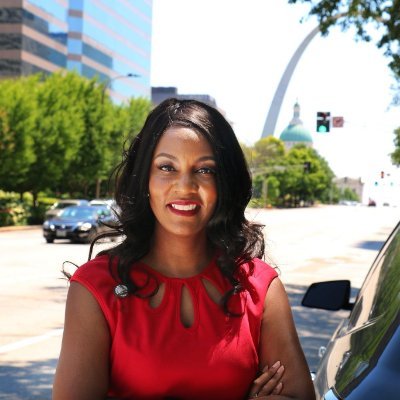
There was an encouraging piece by Barbara Rodriguez in The 19th* about Tishaura Jones’s election to be mayor of St. Louis that includes wisdom from Kimberly Peeler-Allen and Brenda Choresi Carter about the recent increase in Black women’s leadership:
Tishaura Jones was elected Tuesday as the first Black woman mayor of St. Louis, the latest in a recent surge of Black women running for and being voted into positions of power in major U.S. cities.
Jones, the city’s treasurer, was making her second run after losing the 2017 Democratic primary by fewer than 900 votes. During a speech Tuesday night after her runoff victory over Alderman Cara Spencer, Jones indicated her intention to address broad inequities as part of her vision for St. Louis.
“I will not stay silent when I spot racism,” Jones said. “I will not stay silent when I spot homophobia or transphobia. I will not stay silent when I spot xenophobia. I will not stay silent when I spot religious intolerance. I will not stay silent when I spot any injustice.”
Jones’s election is part of an unmistakable trend in American cities: In 2017, Keisha Lance Bottoms became the second Black woman elected mayor of Atlanta and Vi Alexander Lyles became the first Black woman elected mayor of Charlotte, North Carolina. In 2018, LaToya Cantrell became the first woman mayor of New Orleans and London Breed became the first Black woman mayor elected in the city of San Francisco. In 2019, Lori Lightfoot became the first Black woman mayor of Chicago.
This year, Black women are also running for mayor in Boston and New York. As of March 2021, there are 32 women serving as mayors in the 100 largest cities. Seven are Black women.
“We’re seeing a reshape of what executive leadership looks like,” said Kimberly Peeler-Allen, a visiting practitioner at the Center for American Women and Politics who has studied Black women’s political power and is also a co-founder of Higher Heights, which seeks to elect Black women. “Because we’ve seen Black women run and win in legislative bodies, but we have not seen them at the top of the ticket as the ones who are, ‘The buck stops here.’ We have not seen that in concentrated numbers prior to 2017. And I think that is really reshaping how Black women see themselves, and also how the electorate sees Black women’s leadership and the need for Black women’s leadership.”It’s not just in mayor’s offices. Brenda Choresi Carter is director of the Reflective Democracy Campaign, which tracks the increasing diversity of people in elected office and released its latest report in February. That data shows that from 2016 to 2020, women of color, including Black women, had large increases in political representation in elected city positions.
“The phenomenon of Black women winning mayoral seats isn’t happening in a vacuum,” she said. “There’s actually this real surge of Black women and women of color more broadly in city-level elected offices across the country.”
Carter said the reasons vary based on the political climate of each city. She noted that the bulk of Black women winning office are Democrats, indicating the work ahead for the Republican Party to recruit more candidates of color.
Peeler-Allen said voters are looking for candidates with lived experiences who can help address inequities exacerbated by the coronavirus pandemic.
“People are really recognizing the value of having diverse voices around decision-making tables and the way that women, and particularly Black women, just lead differently,” she said, “It is an opportunity to make sure that all people are included in the conversation.”
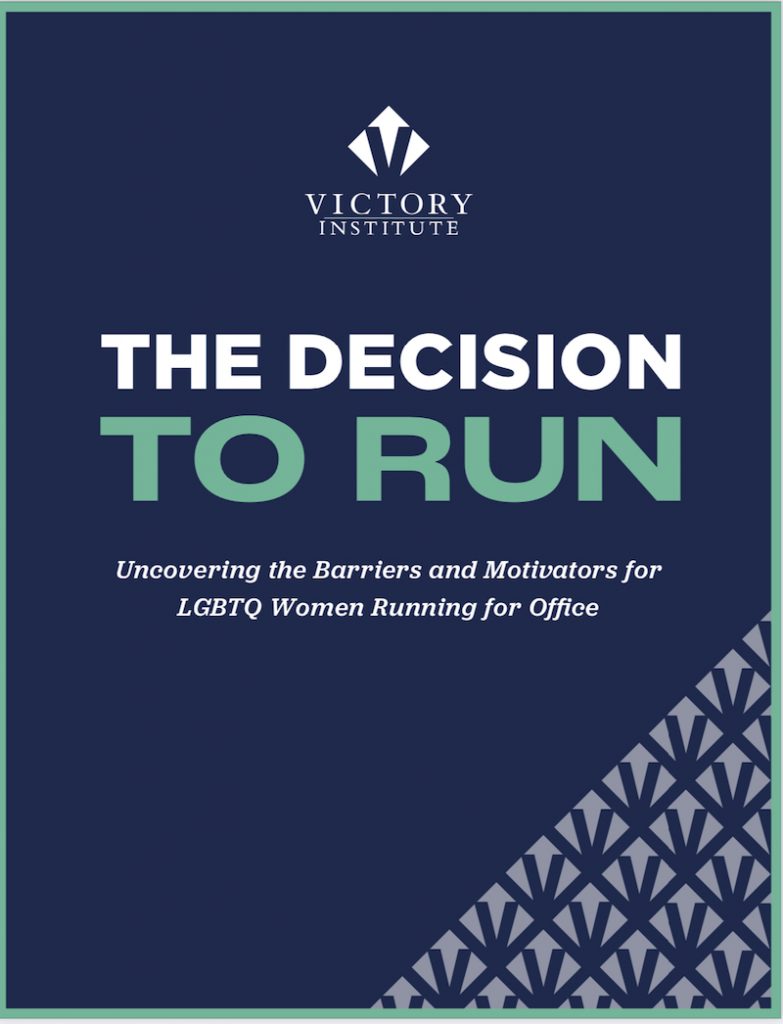
There is a new report from the Victory Institute that examines the challenges and opportunities for LGBTQ women who want to run for office:
LGBTQ Victory Institute’s The Decision to Run Report set out to uncover the barriers and motivators for LGBTQ women who want to run for office. The findings — a result of an extensive survey of nearly 290 LGBTQ women as well as four focus groups — show six common barriers and four motivators mentioned by respondents. It is a first glance – not a comprehensive account – of the challenges LGBTQ women encounter. Yet it can be a guide for equality organizations, campaign training organizations and candidate recruitment programs that believe in the importance of representation for LGBTQ women, as well as a starting point for future research.
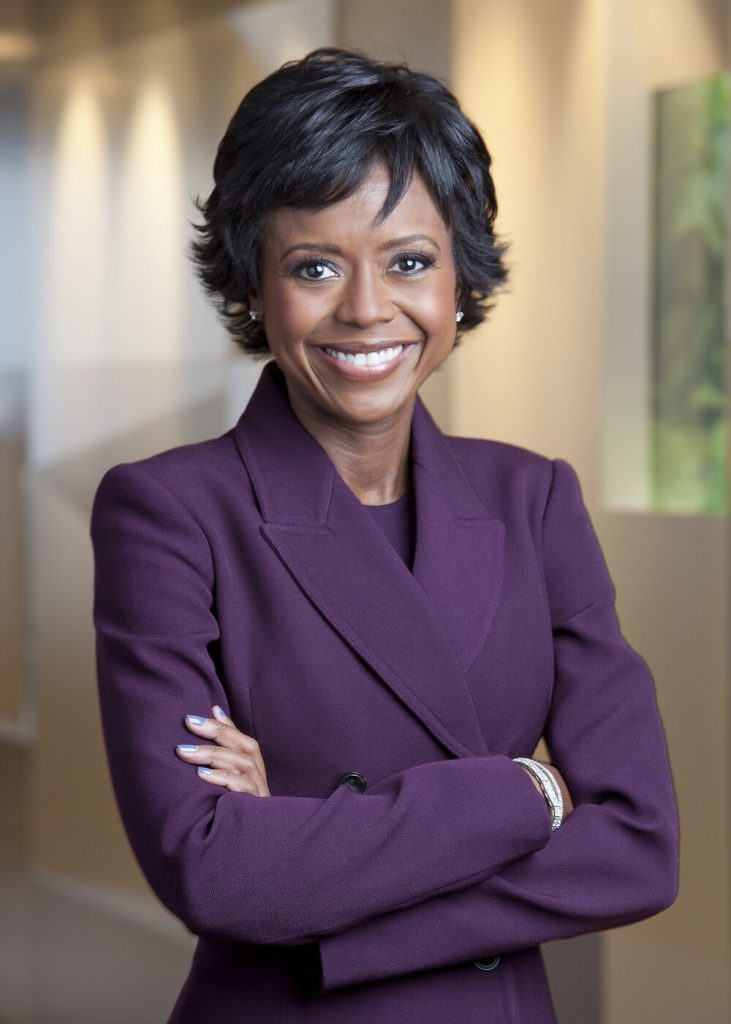
Stay tuned for news about a new relationship between Gender Avenger and RepresentWomen but while you wait on the edge of your seats read this great profile by Gina Glantz about GA’s “Avenger of the Week”—Mellody Hobson:
Avenger of the Week Mellody Hobson and I share a birthday, a passion for social justice, and an enduring friendship. Mellody, the youngest of six children, graduated from high school in Chicago and went on to Princeton. While in college she interned at Ariel Investments, and today she is Co-CEO and President of Ariel Investments, the country’s oldest African American-owned asset management company.
In March, upon becoming Chair of the Starbucks Board of Directors, Mellody became the only African American chairwoman of a Fortune 500 company. She is also a director of JPMorgan Chase. Mellody is actively engaged in the community, serving as Chair of After School Matters, a Chicago non-profit that provides area teens with high-quality afterschool and summer programs, and co-chair of the Lucas Museum of Narrative Art. Her other board memberships include the George Lucas Education Foundation, the Los Angeles County Museum of Art (LACMA) and the Rockefeller Foundation.
Mellody is a graduate of Princeton University’s Woodrow Wilson School of International Relations and Public Policy, and she has received honorary doctorate degrees from Howard University, Johns Hopkins University, St. Mary’s College, and the University of Southern California.
This resume alone makes her worthy of Avenger status. However, it is an insufficient representation of who she is and what she has done with her bully pulpit and resources. Early on in her career, she financially supported educational innovation in Chicago. As her public presence grew, she boldly told a TED audience not to be color blind but to be color brave. Over four million views later, she continues to share that message. Just last year, she was responsible for Princeton renaming a student residential college on campus from Woodrow Wilson Hall to Mellody Hobson Hall. The message of acceptance of a racist president will be replaced with the promise of a great future for students of color and particularly women of color.
And, of course, she is the founding funder of GenderAvenger.
Mellody Hobson, a treasured friend and abiding advocate for racial and gender justice, is our GenderAvenger of the Week.
This black woman designed Jackie Kennedy's iconic wedding dress. Ann Lowe. #BlackWomenDidThat pic.twitter.com/zKJKK2Wg44
— Ebony Noor #Revolt✊🏿 (@DarlingEbony) July 29, 2016
Many thanks to RepresentWomen intern Laura DeMarco for sending me this fascinating article from The New Yorker by Judith Thurman about “consummate couturier” Ann Lowe that makes me long to get back to my sewing machine:
In 1953, Jacqueline Lee Bouvier married John Fitzgerald Kennedy in one of those “weddings of the century” that seem to occur every few years. She was a twenty-four-year-old former débutante, who had been working for a Washington newspaper as an “Inquiring Camera Girl” while prospecting for a husband. He was a freshman senator from Massachusetts with his eyes on the White House. But you know all that, and what ensued. You may even recall the pictures of Jackie’s dress—one of the most photographed bridal gowns in history.
Jackie was the architect of her own myth, and pretty much everything she wore after her marriage was chosen to enhance it. Her Gallic ancestry, embellished in the retelling, was a central motif. In that regard, her wedding gown was a disappointment to her. According to Kennedy historians, the young Miss Bouvier had lobbied for something svelte and Parisian. But Joseph Kennedy, the groom’s father and impresario, overruled her. He was wary of sending the wrong message: decadent foreign glamour.
The dress that Jackie got was a chaste confection of ivory silk taffeta with a portrait neckline, a daintily tucked bodice, and a parasol skirt appliquéd with frilly rosettes. She wore it with regal aplomb, though her pique may have simmered. In 1961, Mrs. Kennedy’s first year in the White House, a writer who interviewed her for the Ladies’ Home Journal reported that the gown had been made by “a colored woman dressmaker” and was “not the haute couture.”
That “colored woman dressmaker,” Ann Lowe, was in fact a consummate couturier. Her work was admired by Christian Dior and by the legendary costumer Edith Head. Jackie’s formidable mother, Janet Auchincloss, was a faithful client. Jackie and her sister, Lee, had both made their Newport débuts in a Lowe dress. Marjorie Merriweather Post, the heiress and philanthropist (Donald Trump bought Mar-a-Lago from her estate), chose a silk-faille robe de style, attributed to Lowe, for her portrait by an artist who had painted Queen Elizabeth. Olivia de Havilland accepted her first Oscar in a strapless Lowe number of aqua tulle lavished with hand-painted flowers. Jessica Regan, an associate curator at the Met Costume Institute, compares Lowe to Mainbocher: “She was a brilliant example of the American couture tradition—a sculptural designer whose work was a dialogue with the body of the woman who wore it.”
Lowe’s evening and bridal wear were sold coast to coast in upscale department stores. She owned salons at several locations on Madison Avenue. In her heyday, the mid-fifties, she claimed that she sold a thousand gowns a year, grossing three hundred thousand dollars. (Her math tends to be inflected by hyperbole. Each gown was an original that required hours of intensive labor; Balenciaga, by comparison, produced about three hundred pieces of couture annually.)
Yet Lowe commuted to the Upper East Side from a ground-floor apartment in Harlem that she shared with her sister Sallie, who did the cooking. The same millionaires who cherished the finesse of her needlework haggled shamelessly over her prices, and she routinely undercharged them, explaining in interviews that the sheer happiness sewing brought her was its own reward. Retailers profited from her label’s cachet but didn’t advance the costs of her materials or her labor, and the debts she incurred to suppliers helped ruin her. (She was ruined several times, but staged more comebacks than Muhammad Ali.) The Kennedy wedding, for which Lowe also dressed the bridesmaids, was a notable debacle for her. A plumbing disaster in her studio destroyed the gowns shortly before the event; toiling sleeplessly, she re-created them at her own expense. She never complained to the family. She did, however, indignantly refuse to use the service entrance at the Auchincloss farm, threatening to take her work back to New York if it and she weren’t ushered through the front door.
Core to RepresentWomen’s mission is to study the best practices that are advancing women’s representation and leadership in the United States and around the globe in order to design policies that can be scaled for maximum impact. Our work is focused on four sets of proposals that address the structural barriers women face as candidates and elected officials—enabling more women to Run, Win, Serve and Lead in politics at the same rate as men.
RepresentWomen’s communications fellow Kaycie Goral and her intern team have produced the videos below that we hope will help to explain our work! It would be grand if you could share them with your networks—thank you!
Women Run:
🏃♀️ RUN: Women have had the right to hold political office for over ONE-HUNDRED years… So, why do women make up less than 30% of U.S. elected officials, and no woman has served as President?
— RepresentWomen (@RepresentWomen) March 13, 2021
👇 Here Are Your Answers. Watch, Learn and Take Action. #RunWinServeLead #ReformNow pic.twitter.com/T9pw7gHnep
Women Win:
🏆 WIN: The U.S. continues to be outpaced by most of our democratic allies for #GenderParity —
— RepresentWomen (@RepresentWomen) March 23, 2021
Allies that don't have better WOMEN running but better SYSTEMS for women to run and win in!
#GenderEquality #RunWinServeLead #RankedChoiceVoting pic.twitter.com/PZWs4QHAHd
Women Serve:
🤝 SERVE: The barriers women face do not end once elected…
— RepresentWomen (@RepresentWomen) March 29, 2021
It's time city, state and national legislatures advance their culture and norms, past the ‘old boys clubs’ that still dominate politics. It's time we help women SERVE!#GenderEquality #RepresentationMatters #Feminist pic.twitter.com/OBv6BclbAL
Women Lead:
👸 LEAD: What makes a Leader?
— RepresentWomen (@RepresentWomen) April 7, 2021
Is it someone strong?
Someone well connected?
Someone Experienced?
How about a woman?
We must face a sad fact: women in the u.s. are not normalized as #Leaders.
Help us change that! Watch and Learn how👇#GenderEquality #WomenLeader #Lead pic.twitter.com/yDMSRnCMZ8

VoteRunLead has a panel at this year’s Skoll World Forum on Gender, Race and Systems in American Politics—which looks great! I am glad to see they are talking about systems! Register here.
We are beyond excited to take part in this year’s Skoll World Forum on April 14th with our panel “Gender, Race, and Systems in American Politics with Vote Run Lead” featuring Co-Founder of Black Voters Matter Fund Latosha Brown, CEO and Founder of Vote Run Lead Erin Vilardi, MN State Senator Patricia Torres Ray, and Chief Program Officer of Vote Run Lead Pakou Hang.
The Skoll World Forum is a premier international platform for advancing entrepreneurial solutions to the world’s most pressing problems. The program is a mix of plenaries, sessions, networking activities, and more! This year’s theme “Closing the Distance” examines local and global divides as we work together to build bridges. Together, we’ll explore ways to close the distance between the world’s toughest challenges and the innovative solutions that aim to build a better future for all.
The virtual gathering takes place from April 13-15 on Hopin, a virtual event venue. Registration is free and open to everyone through the forum sign up form.
Remember to check out this week’s suggested feminist reading from the team at RepresentWomen:
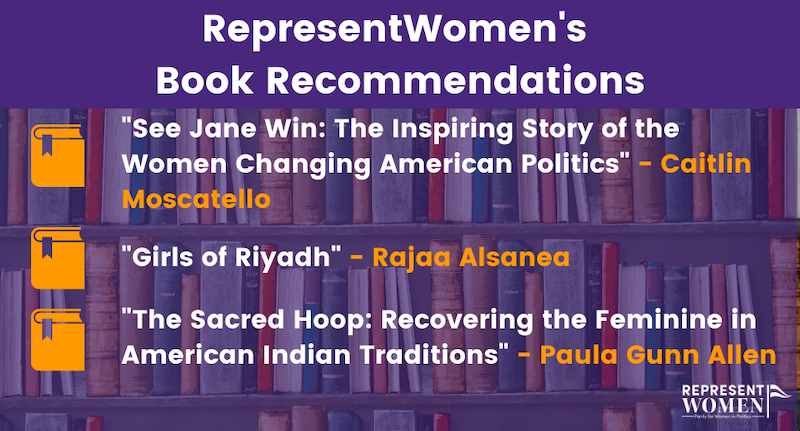

Dogwood is in bloom in my garden. That’s all for this week!





